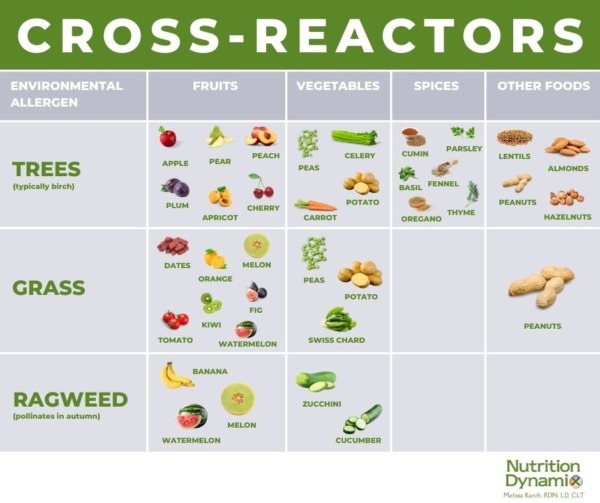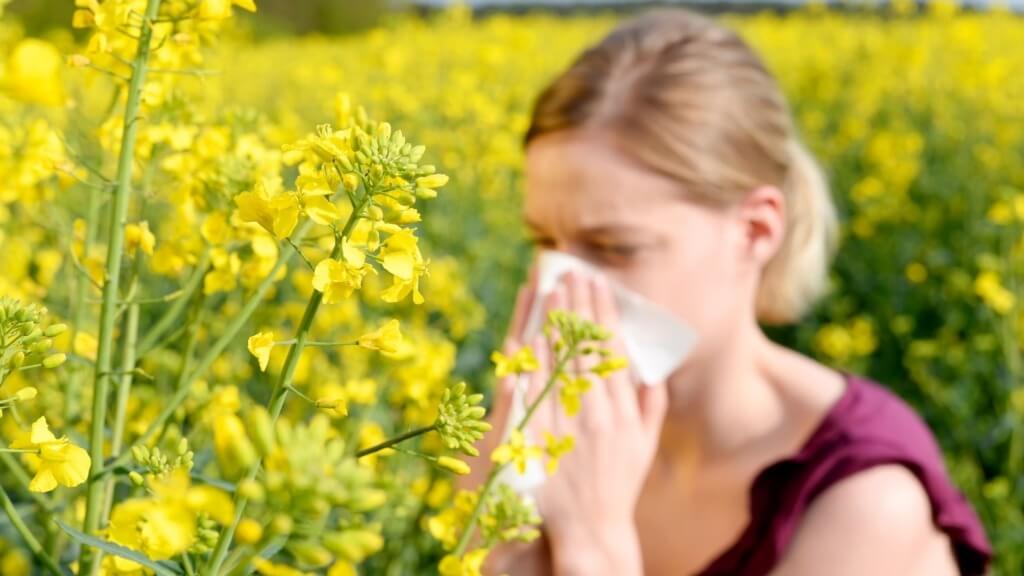Have you ever eaten something and your mouth felt numb or swollen? You're not crazy! You may suffer from Pollen Food Allergy Syndrome (PFAS), a reaction caused by a cross reaction of allergens in the pollens of certain fruits, vegetables, and nuts. Read on to learn more about PFAS and how you can manage it. Contact me to learn if this could be affecting your health.
What is PFAS?
Pollen Food Allergy Syndrome (PFAS), also known as Oral Allergy Syndrome, is a hypersensitivity reaction. It can happen when you eat certain foods that contain pollens you may be allergic to. If you have seasonal allergies, especially to birch, grasses, or ragweed, this may apply to you!
Studies have estimated that PFAS effects between 9% and 35% of the world's population. The reaction that occurs is an allergic response (IgE allergy) limited to the mouth. These allergic reactions can start showing up in people who previously had no trouble eating these foods. The immune system can be complicated!
The main symptoms of PFAS include itchy or swollen lips, mouth, throat, or tongue. More severe reactions such as anaphylaxis (difficulty breathing) are rare and would require immediate medical attention. The typical PFAS reaction does not require medical treatment and usually slowly resolves on it's own after swallowing or removing the food from your mouth. This doesn't mean it's not uncomfortable!
What Happens During a PFAS Reaction?
In people already sensitive to pollen, these allergens enter the respiratory tract and can lead to allergic rhinitis (sinus pressure, itchy eyes, runny or stuffy nose or sneezing). When somebody eats certain raw fruits, vegetables, or nuts that contain the same allergen, the body reacts. It triggers an immune response, leading to an allergic reaction in the mouth. This usually only occurs when the food is raw. The allergens lose their power to cause a reaction when cooked.
Here are some of the most common cross-reactions in PFAS:
- Birch Pollen: apples, almonds, carrots, celery, cherries, hazelnuts, kiwis, peaches, pears, plums
- Grass Pollen: celery, mangoes, oranges, peas, peaches, tomatoes, watermelon, swiss chard
- Ragweed Pollen: bananas, cucumbers, melons, sunflower seeds, zucchini

How Can You Manage PFAS?
If you think you may have PFAS, you can contact me or talk to your healthcare provider. If you haven't had allergy testing before, getting a skin prick test to confirm your seasonal allergies may be recommended. Once you can identify foods that trigger a reaction, the best way to manage symptoms is to avoid eating those foods raw. Many people with PFAS can tolerate cooked or even peeled fruits and vegetables. Try boiling, steaming, sautéing, baking, or roasting foods that cause an allergic reaction when in their raw form. Cutting fruits and vegetables out of your diet should not be an option! Consult a registered dietitian if you need help ensuring you are still getting essential vitamins and minerals, as well as fiber and other nutrients.
If you have questions or concerns about your diet and what nutritional steps you can take to better improve your health, please don’t hesitate to to set up an appointment. There is no “one size fits all” diet and the best approach is a thorough assessment based on YOUR individual needs.
If you liked this article, check out my other blog posts including:
Is Organic Produce Important for Lowering Inflammation?
Eat for Brain Health with the MIND Diet
What Your Poop Can Tell You About Your Health
5 Reasons You May Need Vitamin or Mineral Supplementation
References:
- https://pubmed.ncbi.nlm.nih.gov/31376490/
- https://www.ncbi.nlm.nih.gov/pmc/articles/PMC6843262/
- https://journals.lww.com/dermatitis/Fulltext/2015/03000/Oral_Allergy_Syndrome__Pollen_Food_Allergy.4.aspx
- https://acaai.org/allergies/types/food-allergies/types-food-allergy/oral-allergy-syndrome
- https://www.familyallergy.com/allergies/explaining-oral-allergy-syndrome/


